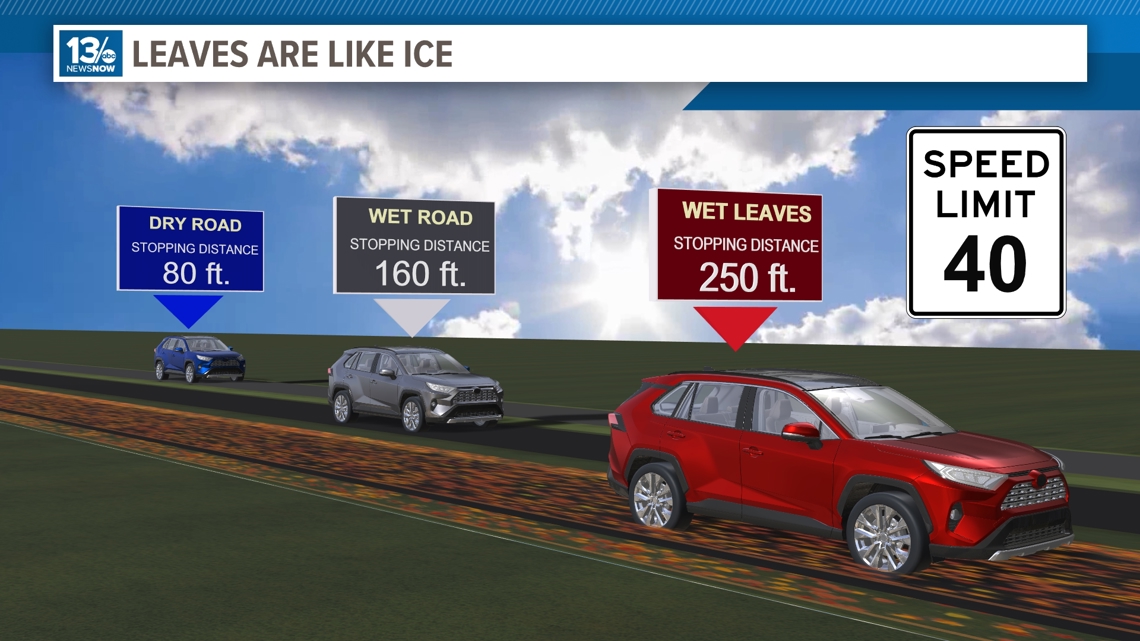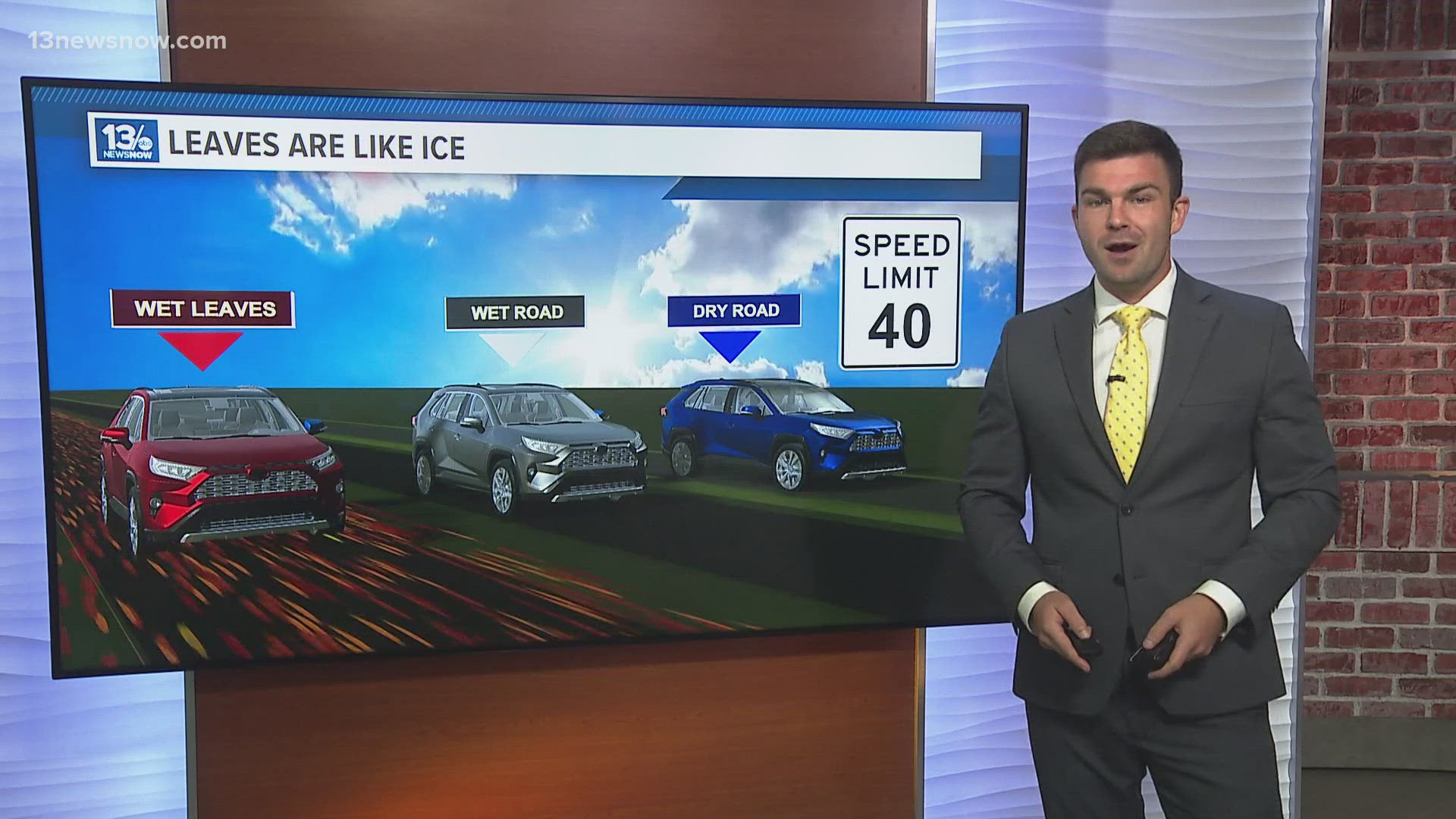NORFOLK, Va. — Every fall, we see the beautiful color changes of the leaves and the crisp, cool air finally makes its way into the area. But when the leaves we love to see on the trees start to fall to the ground and over the roads, this is when it can become a bit dangerous for drivers.
Driving on wet leaves can be extremely dangerous for several reasons.
First, wet leaves can create a slick surface on the road, similar to ice. When leaves are wet, they lose their friction with the road surface, making it easier for vehicles to skid or hydroplane.
This loss of traction can make it difficult for drivers to maintain control of their vehicles, especially when braking or making turns. The risk of accidents increases significantly under these conditions, as drivers may not be able to stop in time to avoid obstacles or other vehicles.


When you're driving on a dry road going 40 mph, you only need about 80 feet of stopping distance. On a wet but clear road, you end up needing about 160 feet of stopping distance. When you add wet leaves into the mix, this stopping distance increases to 250 feet.
Secondly, wet leaves can obscure road markings and other important signals. When leaves accumulate on the road, they can cover lane lines, crosswalks, and other critical indicators. This can lead to confusion and misjudgment, especially in areas with heavy traffic or complex intersections. Drivers may inadvertently drift out of their lanes or miss important signals, increasing the likelihood of collisions.

